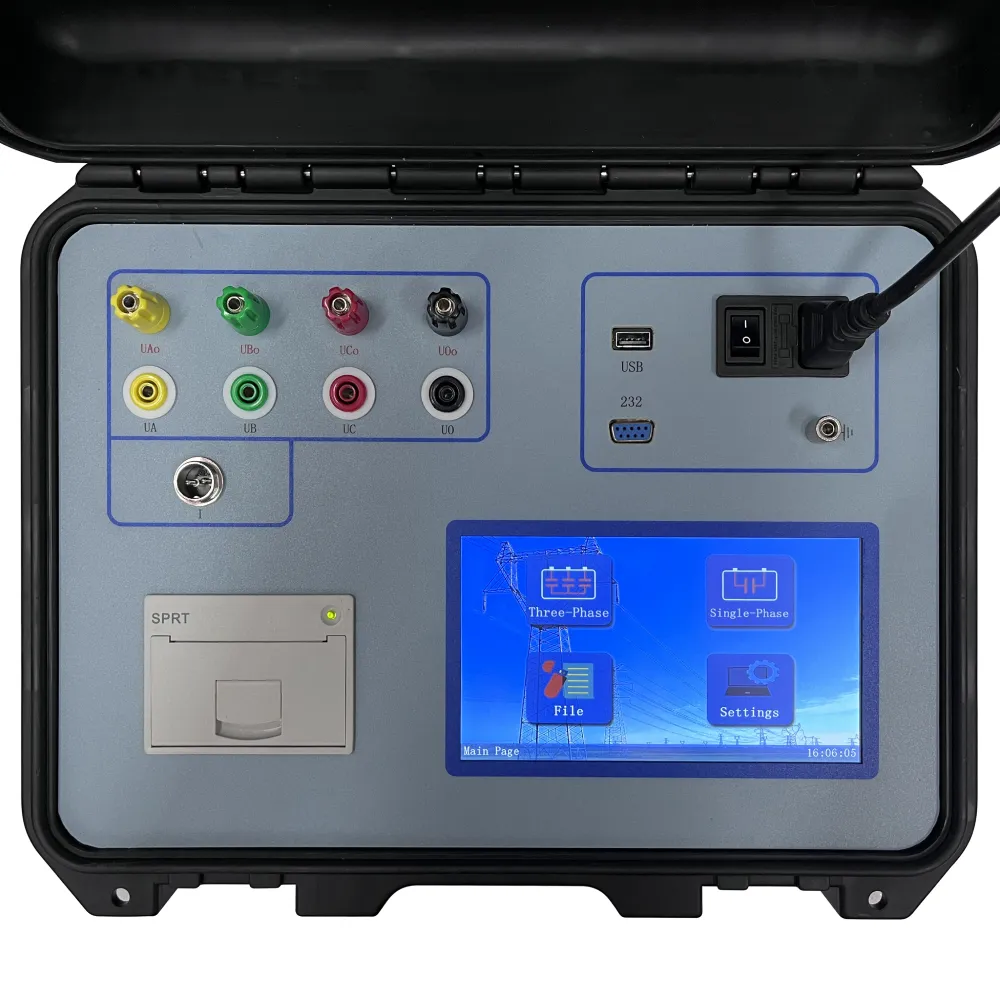 English
English


Testing Equipment for Tan Delta Measurements in Electrical Insulation Analysis
Understanding Tan Delta Test Equipment A Key Tool for Insulation Testing
In the electrical industry, maintaining the integrity of insulation systems is crucial for preventing equipment failures and ensuring operational efficiency. One of the most effective ways to evaluate insulation quality is through the Tan Delta test, facilitated by specialized Tan Delta test equipment. This article delves into the Tan Delta test, its significance, and the equipment used for this essential diagnostic tool.
What is the Tan Delta Test?
The Tan Delta test, also known as the Power Factor test, is primarily used to assess the dielectric properties of insulating materials. It measures the dissipation factor or the ratio of the resistive current to the capacitive current in an insulating material. The term tan delta derives from the mathematical relationship in which the tangent of the angle (delta) represents the power factor of the insulation. A lower tan delta value signifies better insulation quality, while an increase may indicate the degradation of insulation, moisture ingress, or presence of contaminants.
The Tan Delta test is particularly useful for assessing high voltage equipment such as transformers, generators, cables, and switchgear. By providing insights into the insulation condition, it helps in making informed decisions regarding maintenance and replacement, thereby enhancing the reliability of electrical systems.
Significance of Tan Delta Testing
1. Preventive Maintenance Regular tan delta testing can identify developing insulation faults before they lead to catastrophic failures. By detecting issues early, operators can schedule maintenance or repairs, reducing unplanned downtime.
2. Risk Management In critical applications such as power generation and distribution, equipment failures can lead to significant economic losses and safety hazards. Tan Delta testing helps mitigate these risks by ensuring that insulation systems operate within safe parameters.
3. Compliance and Standards Many industries are subject to strict regulatory standards concerning equipment safety and reliability. Tan Delta testing is often a requirement for compliance with these standards, helping organizations maintain their certifications.
tan delta test equipment

4. Lifetime Assessment Over time, insulation can degrade due to environmental factors, operational stresses, and age. Tan Delta tests can provide a historical record of insulation performance, which is invaluable for lifecycle assessments and planning.
Tan Delta Test Equipment
Tan Delta test equipment is designed to perform precise measurements of the power factor and capacitance of insulation systems. Most modern devices use advanced technology to provide accurate and reliable results. The key features of Tan Delta test equipment include
- High Voltage Testing Capability Devices are typically capable of applying voltages up to 100 kV or more, making them suitable for testing high voltage apparatus.
- Automated Testing Many units come with automatic measurement capabilities, allowing for quick data collection and minimizing human error. Users can set parameters, and the equipment conducts the test according to predefined protocols.
- Data Analysis and Reporting Advanced Tan Delta test equipment includes software for data analysis, allowing users to generate detailed reports and trends over time. This feature is essential for making informed maintenance decisions.
- Portability Some manufacturers offer portable Tan Delta test equipment, enabling field testing. This is particularly beneficial for on-site assessments of power equipment.
Conclusion
The Tan Delta test is a cornerstone of insulation diagnostics in the electrical industry, and the right test equipment is vital for ensuring accurate and reliable results. By integrating Tan Delta testing into regular maintenance routines, organizations can better manage their electrical assets, improve safety, and ultimately save costs associated with emergency repairs and unplanned outages. Investing in high-quality Tan Delta test equipment is a strategic move for any company aiming to uphold operational excellence and equipment reliability.
-
Differences between open cup flash point tester and closed cup flash point testerNewsOct.31,2024
-
The Reliable Load Tap ChangerNewsOct.23,2024
-
The Essential Guide to Hipot TestersNewsOct.23,2024
-
The Digital Insulation TesterNewsOct.23,2024
-
The Best Earth Loop Impedance Tester for SaleNewsOct.23,2024
-
Tan Delta Tester--The Essential Tool for Electrical Insulation TestingNewsOct.23,2024





